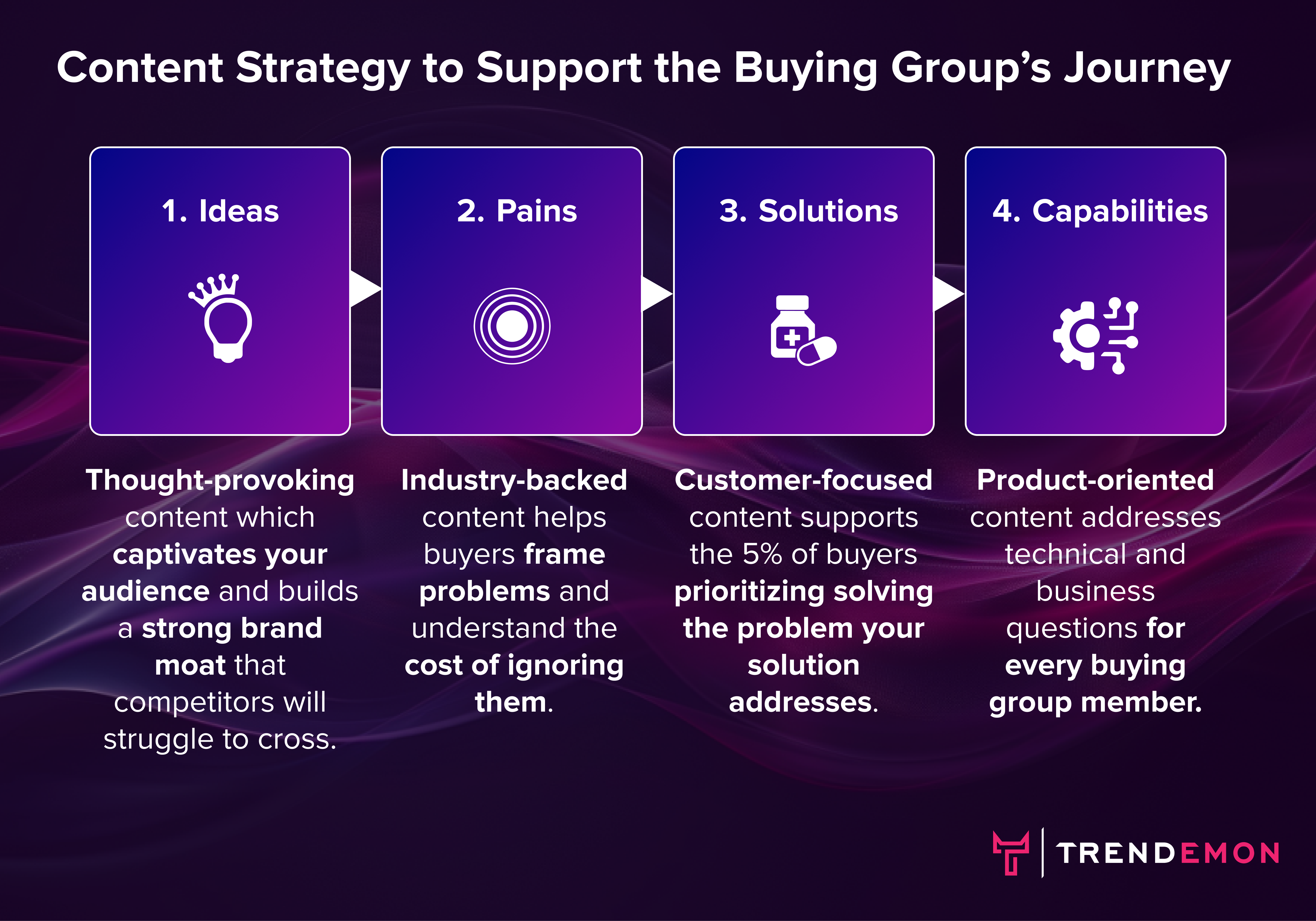Crafting a Content Strategy to Support the Buying Group’s Journey

In classic B2B GTM (everything but PLG), there is no single buyer—there’s a buying group. For deals over $100K ACV, our data shows that 9-13 unique people from each company with a pipeline opportunity visit the seller’s website during the buying process. Interestingly, 80% of these group members will remain anonymous, even after the deal is won.
Each member has different agendas, responsibilities, and questions they need answered. Here’s how we suggest structuring your content strategy to support the diverse journeys of buying groups:
🧠 Ideas That Resonate (Thought Leadership)
To create demand for your products, you must first create demand for your content. Brands that captivate their target audience build a strong moat that competitors struggle to cross. Thought leadership should be closely linked with the people behind your brand, not just company leadership. Encourage all employees to build their personal brands—it’s a win-win for everyone involved.
🔍 Pains That Resonate (Problem Awareness)
Once you have their attention, shift the conversation to specific pain points and challenges. Help buyers frame their problems and understand the cost of ignoring them. Use case studies, customer testimonials, and industry reports to showcase real-world problems and effective solutions.
💡 Solutions That Resonate (Consideration Stage)
Support the 5% of companies actively looking to solve and prioritize their problems. Highlight the benefits of your solutions without overtly selling. Use solution briefs, expert interviews, and comparison guides to educate buyers and help them envision your offering as the solution they need.
🔧 Capabilities That Resonate (Product Marketing)
Product marketing is crucial in the decision-making stage. Communicate your offerings’ unique capabilities and value clearly. Product demos, data sheets, and ROI calculators are invaluable in helping buyers make informed decisions. Many buying group members will need support on how your product integrates with various stacks, the implementation overhead, and how to measure and demonstrate ROI.
To sum it up, view your content strategy through the lens of the entire buying group, not just your potential champion. Surround them with captivating and valuable ideas and information that either inspire them or save them valuable time in reaching the right decision.